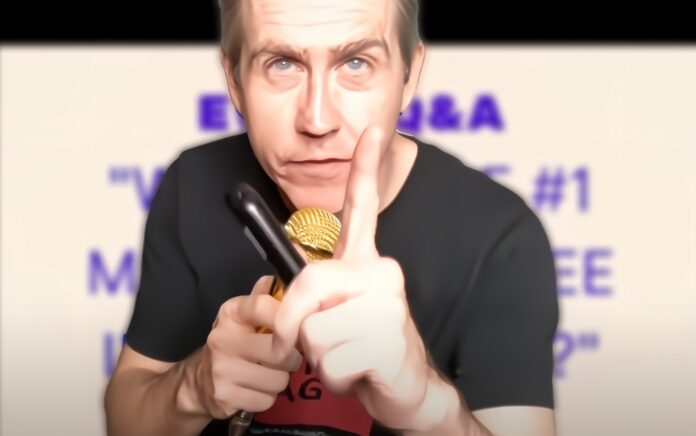Chris Zukowski, Creative Director of How To Market A Game, is a game marketing consultant and strategist who has guided numerous game studios in finding their audience. In his appearance on IndieGameBusiness, Zukowski uses just half an hour (and some change) to highlight 30 common mistakes that game developers make on their journey to releasing a game. More crucial than identifying what goes wrong, however, are the tips and insights on how to avoid these pitfalls. Read about some of the key insights below or check out the full talk.
Mistakes you can’t take back
Consider that Early Access is essentially your game’s launch. “Once somebody can lay money down and get your game, the die is cast, the concrete is set,” states Zukowski. Launching in Early Access without proper preparation can lead to poor reviews, which are hard to recover from. For feedback, opt for playtests or betas instead.
Ensure your Steam page is up well in advance. Valve’s data shows games with a Steam page up for at least six months perform significantly better. Contrary to popular belief, “wishlists aren’t milk,” and they do not age out quickly. Remember to update your release date on Steam. Many developers forget this, causing their game to appear in the popular upcoming list prematurely. Valve sends reminders about this: “They start sending emails a couple of weeks before your launch date.” Ensure you whitelist this email and use an address you check regularly to avoid missing it.
Steam page mistakes
Always launch with a trailer. Even a 30-second trailer can significantly impact your game’s reception. “People always say, ‘Do I really need a trailer?’ Yes, this is your announcement. Just do it.” Also, include gameplay in your primary trailer. Steam uses the first slot on your page for micro trailers, which play when users hover over your game. “Gamers on Steam don’t want to watch cinematics; they want to watch gameplay.”
Ensure your game’s genre is clear. Steam shoppers want to know what type of game they are considering. “Ask a stranger what kind of game you think it is, and they will tell you. If they get the wrong choice, it’s time to fix your Steam page.” Avoid excessive lore in your marketing descriptions. Focus on genre and gameplay, which are crucial for attracting potential buyers. “Gameplay is what shoppers are looking for; lore obscures the genre.”

Leverage the traffic to your old games to promote new releases. Use cross-promotional links and create franchise lists to direct traffic to your new game. “Valve sends more traffic to old games than it does to new games, three times as much.” Also, ensure your publisher is promoting your game across their back catalog. Verify that links on your publisher’s page direct to your game, not just their general page. “This is why you give them the 30%… get on those publishers.”
Translate your Steam page into multiple languages. Non-English-speaking markets can significantly boost your visibility and wish lists. “It is no longer sufficient to just translate to English; we have to get all the languages.” Oh, and regularly update your tags to ensure they accurately reflect your game’s content and avoid irrelevant or incorrect tags added by fans. “It’s just like weeding your garden; once a month, just go in there, pull out anything that’s not there.”
Communication mistakes
Always announce your game with a tweet or a simple message. “All you say is super excited to announce your new game. That’s it, that’s all you gotta do.” Include a trailer in your announcement to make it more engaging and newsworthy. “Put ‘announcement trailer’ in your YouTube video title for better visibility.” Always include a clear call to action in your communications. “Tell people what to do—they don’t know.” Whether it’s wishlisting your game, joining your mailing list, or playing the demo, make sure to direct your audience explicitly.
Regular updates are essential to maintain interest and show progress. “Every three weeks, just post it to your Steam page or newsletter; it doesn’t take much.” Focus on content about your game rather than unrelated events. “Fans want to hear about the game, not your trips to conventions.” Build up to your game’s launch with a countdown. This creates anticipation and keeps your audience engaged.
Business Mistakes
Quitting after your first game fails is a common mistake. “The number of studios that release one and only one game is 38,000, while the number of studios that released two games is all the way down to 7,920.” Releasing more games strengthens your marketing and allows for cross-promotion, leveraging fans from previous games. Relying on a single game to fund your studio is unrealistic. “In 2020, 61% of Devolver’s profits came from the back catalog.” Most studios depend on their back catalog for funding.

Discounting your game at every opportunity is essential. “If you get a 20% discount or more, an email goes out to your wishlist followers.” Regular discounts can significantly increase sales and visibility. Deep discounts too quickly can be detrimental though. “If you discount too deep, you just gave away your game to everybody who would have bought it at 25% off.” Implement a gradual discount strategy to maximize revenue from various customer segments.
And finally, indie developers often underprice their games. “Indie games have actually gone down in price while AAA games have been raising their prices.” Compare your game to similar successful ones and add 20% to their price to avoid underpricing. Raising prices helps ensure fair compensation for your work and improves overall market standards.

